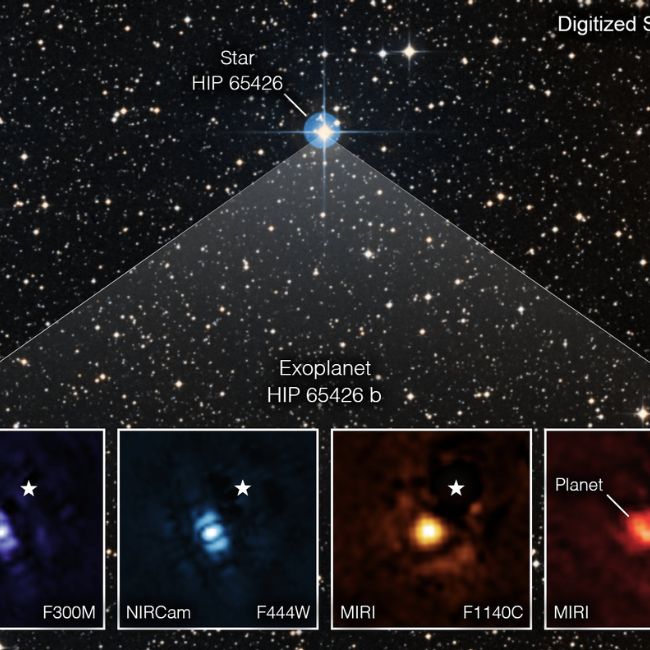
James Webb Space Telescope images exoplanets!
Recommended for Exoplanets
James Webb Space Telescope images a planet outside of our solar system. Experts feel this is a “historic moment for astronomy.”
The images are of an extrasolar planet using infrared light. Infrared light provides a much more accurate indication of a planet’s mass and temperature. Thus it will enable astronomers to detect the movement of clouds drifting across the sky of this planet.
These images include infrared light, which is responsible for the majority of the light that is produced in the planet’s atmosphere. The most recent observations provide new insights into how Jupiter and Saturn may have appeared when they were still in their infancy.
Key Facts!
- The planet known as HIP 65426 b, is a gas giant.
- It is approximately five to ten times the mass of Jupiter.
- And it can be found in the constellation Centaurus 385 light-years away from Earth.
- It is approximately one hundred times further away from its host star which makes it simpler to distinguish.
- Experts feel that this event opens the door to a whole new class of planets that have been completely out of reach to mankind.
- And by observing them at a broad range of wavelengths, astronomers could study their compositions in a much more in-depth way. For example, we will have the ability to recognise the existence of weather.
- According to the most recent findings, the temperature of the planet’s atmosphere is somewhere around 1,300 degrees Celsius.
- It appears to have clouds of silicate dust with a reddish hue.
Similar Stories
- James Webb Space Telescope Discovers Cosmic Puzzles!
- James Webb: ‘Jupiter-Sized’ Planets Found!
- James Webb Space Telescope: Discovering Alien Clues!
Watch a video
Youtube user “Perception” explains The James Webb Telescope in 9 minutes.
Curious Times is a place where we’re passionate about what we do. Consequently, we work hard every day to give our young readers the most outstanding possible experience and information. We also use Curious Times Weekly, The Curious Magazine, and My Expressions to communicate with our audience. As a result, our content is exciting and interesting for our readers.
School children from all around the world appreciate and enjoy our materials. So, we’re always looking for ways to improve, and are curious to hear from you. This, above all, assists us in providing better service to you.
Thus, what sort of news stories capture your interest? In the comments section below? Please share your thoughts! For the simple reason that we enjoy hearing from our young readers. The following social media platforms allow you to communicate with us: WhatsApp, Instagram, Facebook, Youtube, Twitter, and LinkedIn.
0 (Please login to give a Curious Clap to your friend.)
